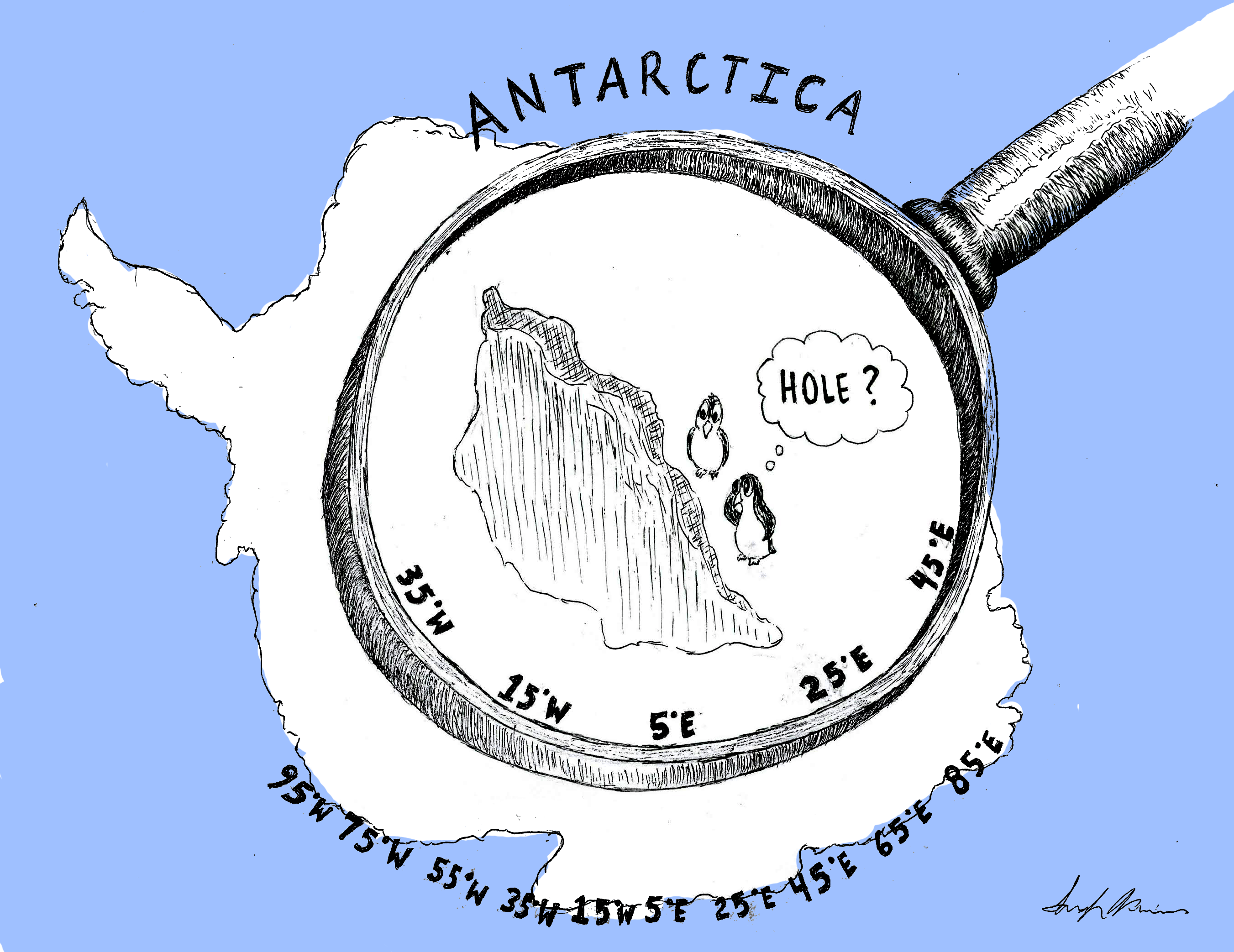In September, a large hole appeared in the Weddell sea in Antarctica. It was last seen in the same location 40 years ago but has now returned, leaving many scientists to question the reason behind its reappearance.
Dr. Kent Moore, an atmospheric physics professor at the University of Toronto, is a part of the team working on the Southern Ocean Carbon and Climate Observations and Modeling (SOCCOM) project to study the hole. Scientifically it is referred to as a polynya, a stretch of open water surrounded by ice.
This is not its first reappearance. “Last year it opened up a month earlier for about 3 weeks,” wrote Moore in an email to The Varsity.
Polynyas have sparked the interest of scientists over the past few decades, and recent advancements in technology have been able to bring in even more data for research. The SOCCOM team has for some time studied the southern waters using robotic floats that monitor the sea. It was only by pure chance that one float popped up in the Weddell region and signalled the return of this polynya.
The uniqueness of this particular polynya is due its large size, which spans approximately 80,000 square kilometres. Officially known as the Weddell polynya, it first appeared during the winters of 1974–1976.
According to NASA, at the time, “There was vigorous air-sea interaction within the polynya that resulted in the convective overturning of the water column and the formation of vast amounts of cold and very dense Antarctic Bottom Water.”
It is likely that this polynya formed under similar circumstances. Polynyas are known to exist in two states: open-ocean polynyas and coastal polynyas. The latter are created regularly in coastal regions as latent heat is absorbed when ice melts; this heat is then released into the surroundings when liquid water freezes.
These polynyas play a functional role in regulating the temperature of the ocean. Sea ice normally acts as an insulator, so its removal would allow for the transfer of heat from the ocean to the atmosphere. This eventually warms the atmosphere and cools the ocean.
“Polynyas are also regions of enhanced biological activity,” said Moore. It can serve as a breeding ground, feeding site, and migration destination for mammals and other marine species.
The world is familiar with the effects of global warming, so it is easy to label the existence of the Weddell polynya as another victim of climate change. However, as Moore stated, “We are not sure if climate change played a role in its return.”
Moore said that the polynya formed near a seamount, or underwater mountain, called Maud Rise. The forced upwelling of warm deep water around Maud Rise is hypothesized to have helped maintain the polynya.
“[It has been] two years now in a row that it has opened after a long absence,” said Moore. “Time will tell if it returns more often.”


